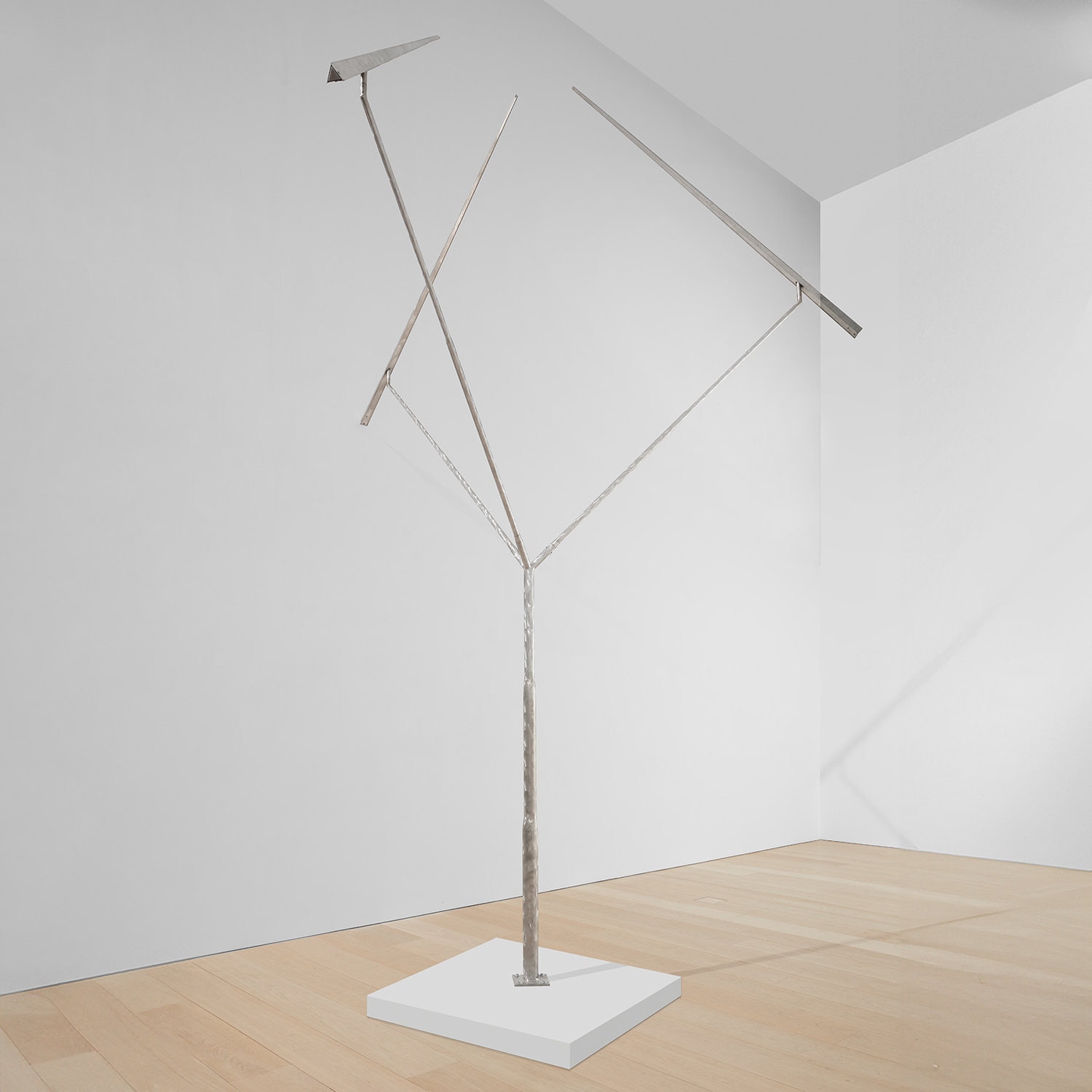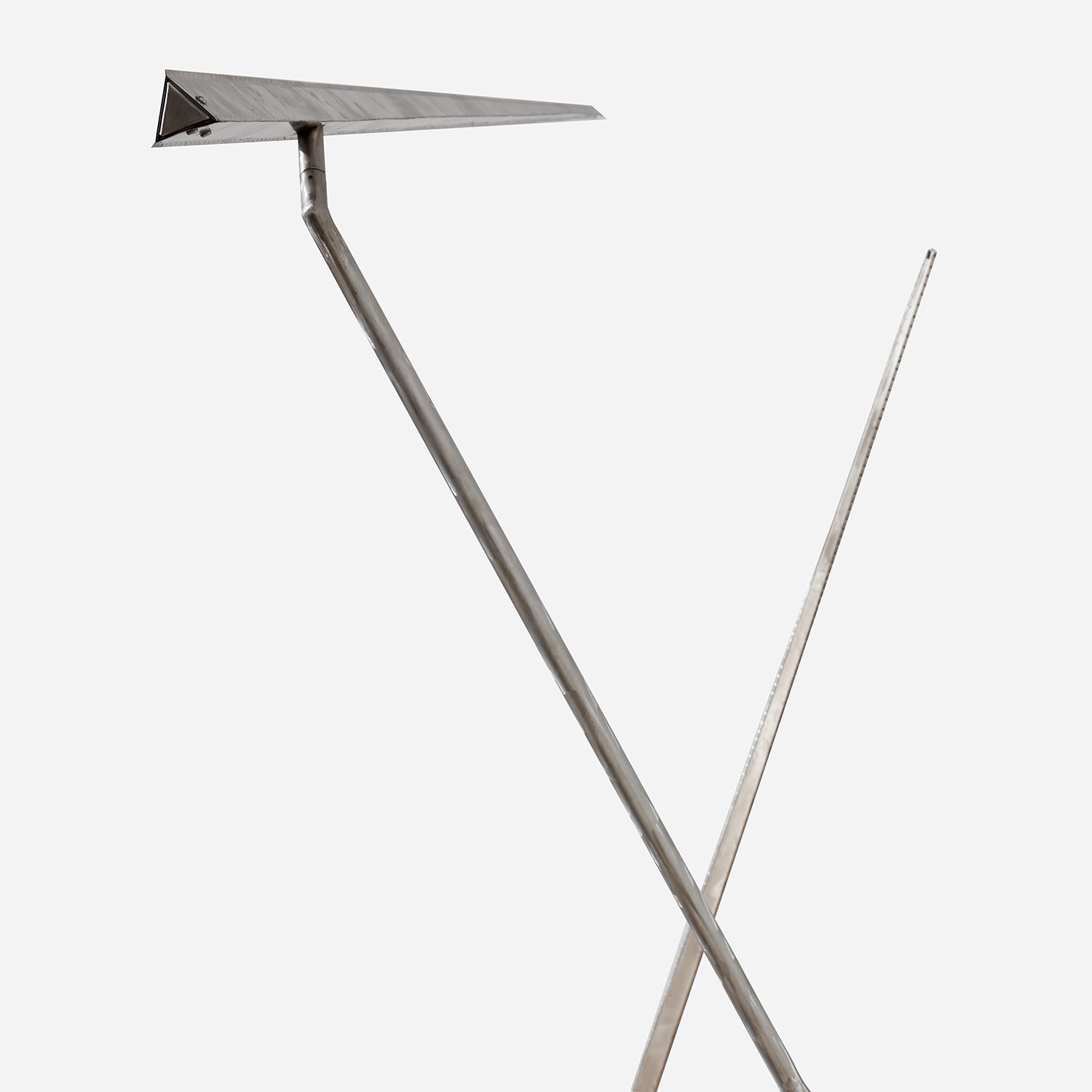





58
George Rickey
Three Oblique Lines Conical Path III
incised with the artist's signature, number and date "1/3 Rickey 1991 - 94" on the base
stainless steel
installation dimensions variable
approximately 231 x 211 x 211 in. (586.7 x 535.9 x 535.9 cm)
approximately 231 x 211 x 211 in. (586.7 x 535.9 x 535.9 cm)
Executed in 1991-1994, this work is number 1 from an edition of 3 of which only 2 were fabricated.